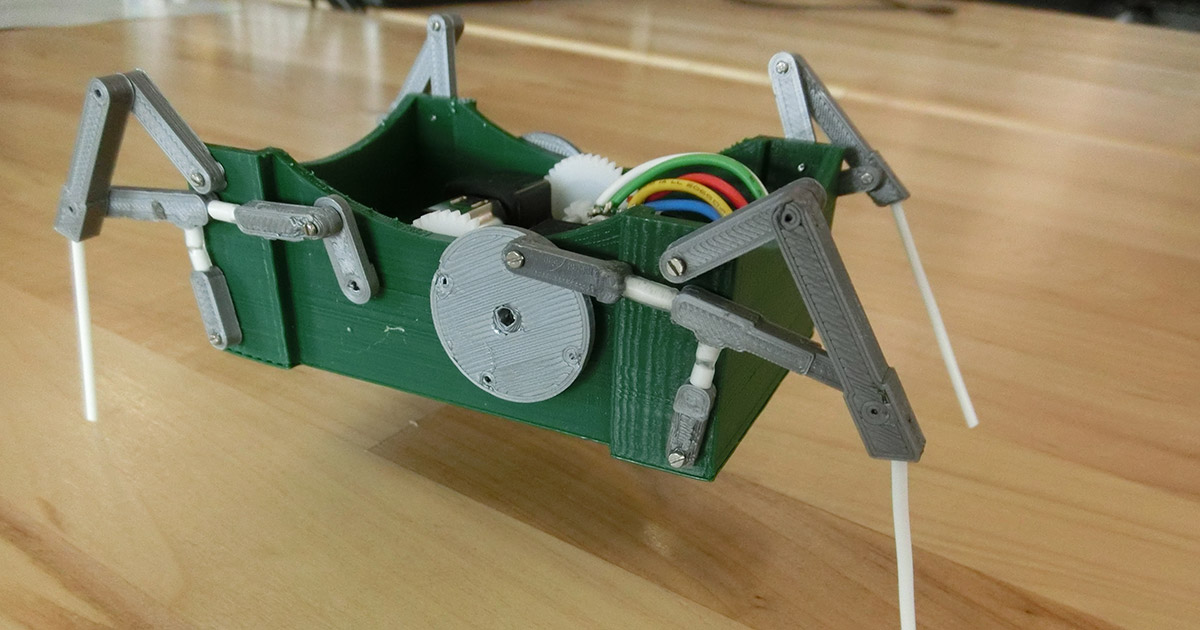
A miniature walking robot with shape-morphing capabilities developed in Zhao’s lab.
Jianguo Zhao, assistant professor in the Department of Mechanical Engineering, has received a Computer and Information Science and Engineering Research Initiation Initiative Award from the National Science Foundation’s Division of Information and Intelligent Systems.
The Research Initiation Initiative program supports untenured faculty in their first three years of an academic position, but not more than five years after completing their Ph.D. Zhao’s two-year project, titled “Embedded and Continuous Shape Morphing using Twisted-and-Coiled Artificial Muscle,” leverages his expertise in developing biologically-inspired robots with various locomotion capabilities. Applications for such robots include search and rescue, surveillance and environmental monitoring.
During the course of his research, Zhao plans to investigate a novel shape-morphing scheme that can autonomously modify the shape of a structure to enhance robot performance. In nature, this behavior can be seen in animals when they use the same body part for different locomotion purposes; for example, frogs can swim with legs and sea lions can walk with flippers. Zhao’s goal is to leverage varying shapes from the same structure for robotic locomotion in different environments, accomplishing similar multi-modal locomotion found in animals. This advancement could drastically reduce a robot’s cost while dramatically improving its functionality.
The proposed shape morphing scheme can potentially enable a structure to morph into a three-dimensional shape without using bulky external sensors and actuators. The shape-morphing scheme is accomplished by embedding a novel twisted-and-coiled actuator into soft materials in combination with a thermoplastic material with temperature-dependent stiffness. Zhao will apply embedded and continuous shape morphing through closed-loop shape control made possible by the actuator’s dual actuation and sensing capabilities. To establish this, Zhao will use physics-based models to relate a desired shape of a structure to the embedded twisted-and-coiled actuator’s electrical resistance. The closed-loop shape control is then accomplished by controlling the actuator’s resistance to a desired value.
The shape-morphing scheme will then be applied to a miniature amphibious robot so its legs can morph to swim in water and morph to walk on ground. Eventually, Zhao expects that this novel technology will enable adaptive robots that can reconfigure their shape, structure, or functionality to fulfill multiple tasks in diverse environments. Further, it will also impact STEM students’ learning in the classroom by advancing curriculum and research-inspired projects.